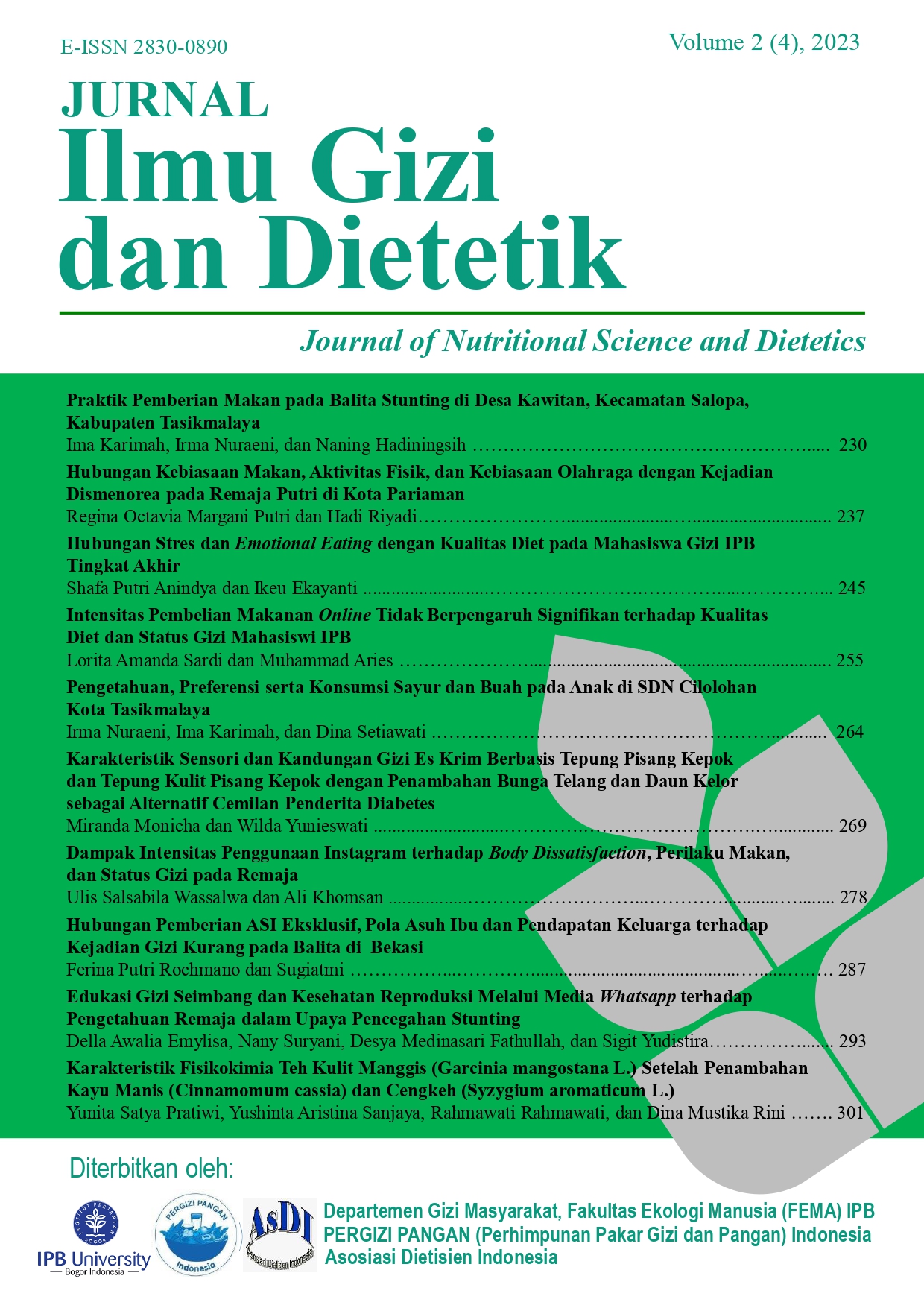Dampak Intensitas Penggunaan Instagram terhadap Body Dissatisfaction, Perilaku Makan, dan Status Gizi pada Remaja Impact of Instagram Usage Intensity on Body Dissatisfaction, Eating Behaviour, and Nutritional Status in Adolescents
Abstract
Social media that displays ideal body figures causes adolescents compare their body shape with social standards. This phenomenon encourages adolescents to make various efforts, such as excessive dieting, which can affect body image, eating behavior, and nutritional status. This study aims to analyze the effect of the intensity of Instagram use on body dissatisfaction, eating behavior, and nutritional status of Jakarta City and Bogor Regency adolescents. Demographic differences aim to see the impact of Instagram on the two locations. The research design used a cross-sectional study of 100 subjects selected by purposive sampling. Data was collected through interviews and self-administered. Most of the subjects fall into the light user category when using Instagram (69%), have a perception of body dissatisfaction (57%), belong to the external eating behavior type (68%), are at risk of experiencing eating disorders (12%), and have normal nutritional status (69%). There was no significant effect between the intensity of using Instagram on body dissatisfaction, eating behavior, and nutritional status (p>0.05). Instagram does not directly affect body dissatisfaction, eating behaviour, and nutritional status of adolescent, but other factors can contribute more, such as the subject's interpersonal skills, food intake, and other socio-demographics.

